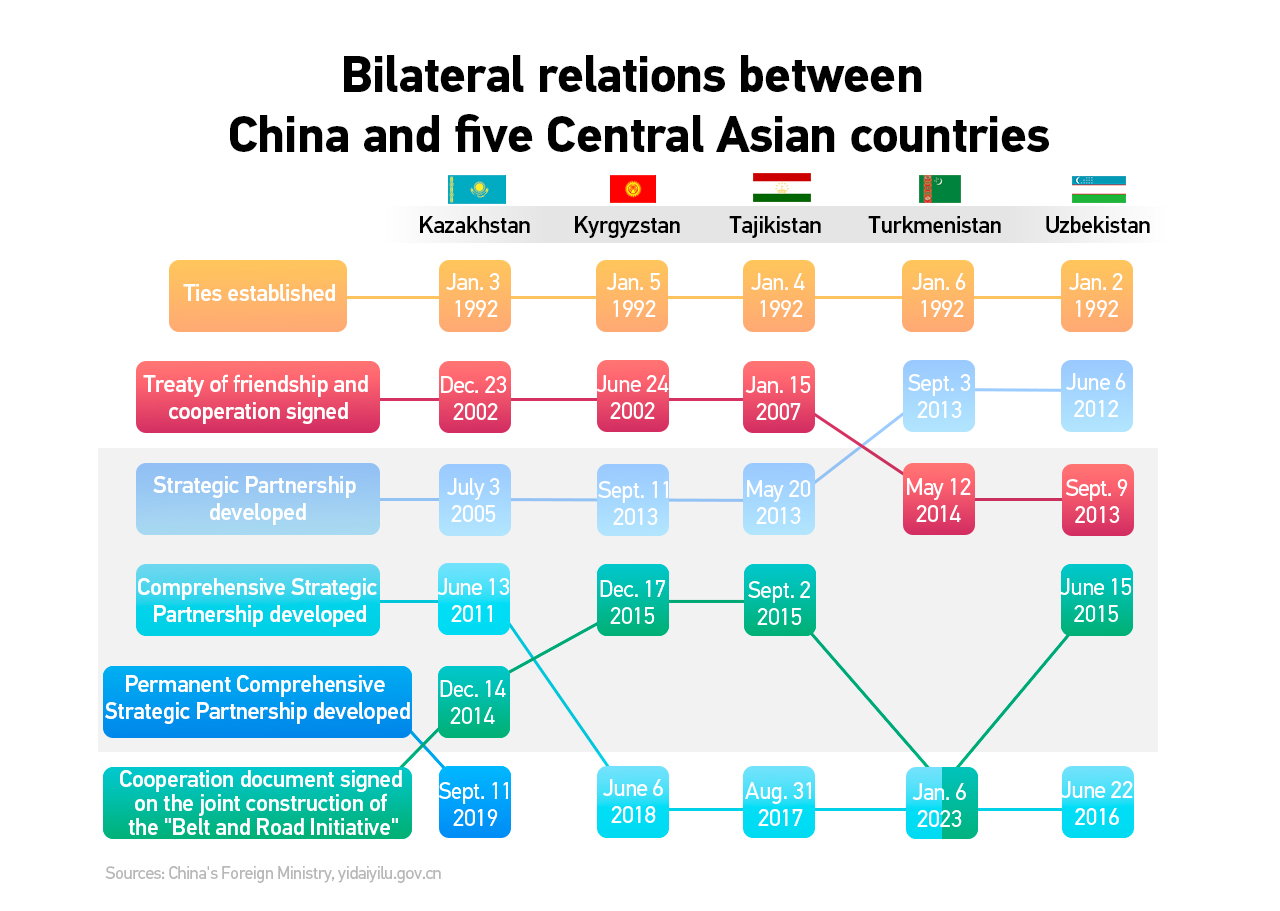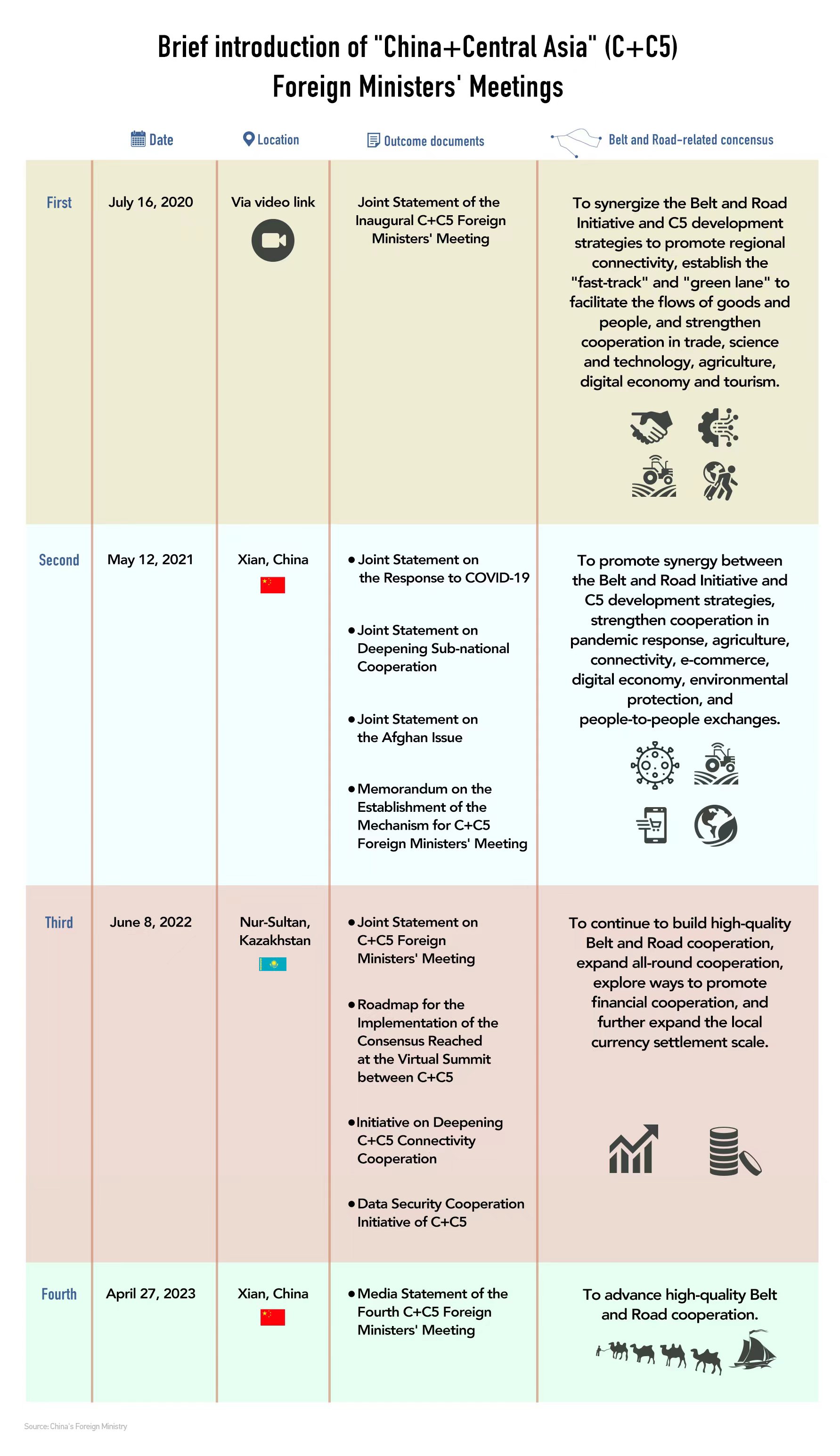China has established a comprehensive strategic partnership, advanced the building of a community with a shared future for mankind at the bilateral level, and signed the Belt and Road Initiative (BRI) cooperation documents with all five Central Asian countries.
The latest milestone took place in January this year, when China and Turkmenistan elevated the bilateral relationship to a comprehensive strategic partnership, reached a consensus on advancing the building of a China-Turkmenistan community with a shared future, and signed agreements on cooperation under the framework of the BRI and cooperation in other fields.

Thirty-one years ago, China took the lead in establishing diplomatic ties with the five Central Asian countries – Kazakhstan, Kyrgyzstan, Tajikistan, Turkmenistan and Uzbekistan, opening the door to bilateral exchanges and cooperation.
Over the past 31 years, China and Central Asian countries have blazed a new trail of good-neighborly friendship and win-win cooperation and set a good example of fostering a new type of international relations.
China + Central Asia (C+C5) cooperation
The C+C5 cooperation mechanism, a new mechanism established for promoting cooperation between China and Central Asian countries, has provided an important platform for deepening all-round cooperation between them.
Last month, the fourth C+C5 Foreign Ministers' Meeting, chaired by State Councilor and Foreign Minister Qin Gang, was held in northwest China's Xian, a city with over 3,100 years of history, and known as the starting point of the ancient Silk Road that went through Central Asia to Europe. The meeting yielded a consensus as they agreed to adhere to mutual benefit and win-win results, advance high-quality Belt and Road cooperation and expand security cooperation.

When meeting with Qin last month, Kazakhstan's Deputy Prime Minister and Foreign Minister Murat Nurtleu said that the strategic partnership with China remains one of the priorities of Kazakhstan's foreign policy. Nurtleu highlighted the need for joint efforts to implement the agreements reached at the highest level to expand multifaceted cooperation between the two countries, particularly in trade and investment.
The C+C5 foreign ministers' meeting was launched in 2020 and has been held annually since then in a bid to bring mutual trust and cooperation between the two sides to the next level.
The first C+C5 Summit will be held on May 18 and 19 in Xian.
Being the first offline summit between leaders of the six countries since the establishment of diplomatic relations 31 years ago, the summit is of milestone significance to China's ties with the five Central Asian nations, said Wang Wenbin, spokesperson of the Chinese Ministry of Foreign Affairs, at a Monday briefing.
High-quality Belt and Road cooperation
Central Asia is where the "Silk Road Economic Belt," the land part of the BRI, was first proposed. Upholding the principle of extensive consultation, joint contribution, and shared benefits, China and Central Asian countries have empowered the BRI to bear rich fruits in Central Asia, bringing tangible benefits to the local people of the region.
"The BRI has brought China and the five Central Asian countries even closer. The upcoming China-Central Asia Summit will further guide the six countries to continue the friendship and deepen cooperation, jointly building the China-Central Asia community with a shared future," said Yu Xiaoshuang, an assistant researcher at the China Institute of International Studies.
Read more:
Head-of-state diplomacy ushers in thriving China-Central Asia ties
How China, Central Asian countries jointly advance Belt and Road Initiative?